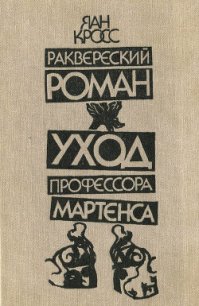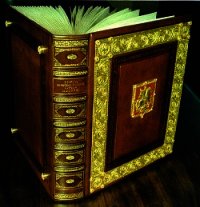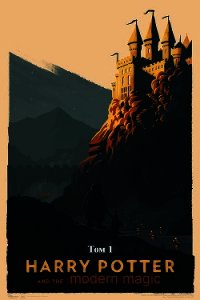Современная магия - Хоффманн Луис (книги бесплатно без регистрации txt) 📗
While it is obvious that Hoffmann understood this important truism, many of the magicians who were deeply influenced by his writings over the course of the next century forgot it, and the effectiveness of their performances suffered because of it. «The evening dress of ordinary life» in Victorian times was quite different from that of today, yet the image of the magician in Inverness cape, top hat and tails still persists. Also, the apparatus «of a simple and homely kind» that would seem quite natural in a Victorian drawing room is, in the magic performance of today, so unusual that it gives the appearance of having been created only to produce the desired effect. Yet today there are still many magicians who present their effects on single-leg tables with black velvet drapes, often with gold fringe, a common piece of furniture in Professor Hoffmann's time but totally unknown-outside of magic performances-in the contemporary world. One can imagine that if the good professor were alive today to see the continued use of the props described in his great textbook, he would thoroughly disapprove.
But, granted that Hoffmann's views on performance style (and, unfortunately, his Victorian trappings) have been basic to the magic of the last century, many other things have changed since he wrote his book. In the introduction to Modern Magic, for instance, he describes «two or three appliances, which are of such constant use that they may be said to form the primary stock-in-trade of every conjuror. These are-a short wand, a specially adapted table, and certain secret pockets in the magician's dress.» He comments that these «are so indispensable that we could hardly complete the description of half-a-dozen tricks of any pretension without a reference to one or other of them.» It is interesting that a century later all three of these primary «appliances» have become virtually obsolete, and are used today only in the most specialized circumstances. The wand is still used in the presentation of some classic effects such as the Cups and Balls, but the tailcoat with its secret pochettes and profondes, and the draped table with its servante and elaborate traps, have been (or should be) relegated to magic history. It is significant that today's most successful young magician, Doug Henning, who has starred on Broadway and in a number of highly successful television specials, has made as radical a change in the image of the traditional magician in our time as Robert-Houdin did in his. Instead of the traditional tails and top hat, Henning has adopted a theatrical version of the dress of contemporary youth, wearing blue-jeans style pants and skin-tight T-shirts which offer convincing evidence that nothing he uses in his amazing effects could be concealed on his body. Thus, when Henning magically produces a huge owl or a large bowl of fire (both effects from his repertoire), the amazed response of his audiences is much greater than if he were attired in a tailcoat or a voluminous opera cape.
Some effects, using props common in the Victorian era but uncommon today, have also disappeared. It is interesting that the most common image of a magician is a man pulling a live rabbit from a top hat, yet this feat, almost never seen today, was effective in the nineteenth century because the magician could borrow a top hat from any gentleman in his audience. The fact that it was a borrowed hat made the production of rabbits (and often other unlikely articles such as cannonballs, bird cages and lighted Chinese lanterns) a truly amazing effect. Today few people, save magicians, carry top hats, and a contemporary audience might suspect (perhaps correctly) that the hat containing the rabbit is just another trick magician's prop.
There is another popular area of magic that has been almost completely transformed, in terms of technique, since Professor Hoffmann's time. This is the vast field of card magic. Unquestionably, more technical literature has been published on card magic in the last century than on any other area of magic; the number of books, large and small and in all languages, runs into the thousands.
In Hoffmann's day, the «Pass» (Sauter la coupe), following the dictates of the great Robert-Houdin, was the most important sleight in all card magic. Today, partly because it is extremely difficult to do undetected and because so many effective substitutes (totally unknown in Hoffmann's time) have been invented, it no longer occupies such a central position in card technique. This is not to say that this classic sleight, in the hands of such contemporary card experts as Charles Miller or Derek Dingle, is not powerfully deceptive, but simply that it is no longer the backbone of card conjuring. Through the writings and inventive talents of such men as S. W. Erdnase (whose classic Expert at the Card Table was published in 1902), and such contemporary card geniuses as Dai Vernon and Ed Marlo, the entire technique of card magic has changed, with literally hundreds, perhaps thousands, of new sleights and subterfuges invented over the past hundred years. While the techniques have changed radically, however, many of the classic effects remain the same and are still in use today; a great number date back to before the time of Hoffmann to the great Viennese card magician Johann Nepomuk Hofzinser (1806-1875), and perhaps even before.
An interesting inclusion in Hoffmann's chapter on card sleights is instructions on how to throw a card. While not strictly a magic effect, the throwing of playing cards later became a feature in the performances of many major stage magicians like Howard Thurston and Maurice Raymond, who hurled cards from the theater stage to the highest reaches of the top balcony. One of America's cleverest card magicians of today, Ricky Jay, has revived the old feat of card throwing and includes it as a regular feature in his act, and has even written a book on the subject.
Since the publication of Modern Magic, two specialized types of magician that were minor figures on the magic stage a century ago have moved into the limelight. One is the illusionist, the magician who specializes in spectacular feats using people and large animals. This type of magician rose to prominence in the era of vaudeville and the music halls, when magicians were required to perform in large theaters where more intimate magic would not be effective. Such master magicians as Herrmann, Kellar, Thurston and Blackstone in America, Maskelyne and Devant in England, and Carter, Raymond, Nicola and Levante touring the globe brought large-scale stage illusions to enthralled theater audiences. The tradition of the grand illusionist remains with us today in the spectacular performances of Doug Henning, Harry Blackstone, Jr., and Siegfried and Roy. The other new breed of magician to rise to prominence has been the mentalist, or mindreader, with such names as Alexander, Annemann and Dunninger prominent. (It was Dunninger who first realized the effectiveness of presenting mental magic on radio and, later, on television.)
Both illusions and mentalism are represented in Modern Magic, with explanations of such early illusions as the Sphinx, the Cabinet of Proteus and the Aerial Suspension, as well as an explanation of feats of so-called clairvoyance and second sight. Nevertheless, it is doubtful that Professor Hoffmann realized what prominence they would achieve in the world of magic after the publication of his book. But above all, perhaps, mention should be made of his neglect of the escape, from handcuffs, ropes, boxes and other containers. Houdini, perhaps the best-known magician, of all time, made a specialty of this now-classic trick-and the whole subject is never once mentioned in the Professor's treatise.
So a great deal has changed in magic since 1876; but in its exposition of many of the classic effects still being performed, Modern Magic continues to be of particular interest to the present day magic performer. The Egg Bag, the Chinese Rings, the Rising Cards, the Ring on the Stick and, the oldest known magic effect, the Cups and Balls, are all explained in detail. To this last classic effect, described by Professor Hoffmann as «the groundwork of all legerdemain,» an entire chapter is devoted. True, there have been some changes in Cups-and-Balls technique over the last century (the use of the servante has largely been replaced by the performer working from his coat and pants pockets), but basically the teaching in this chapter remains as solid a grounding in this great effect as one could find. And Hoffmann's strong beliefs on the fundamentals of magic performance are as valid today as when they were first penned: «The ideal entertainment, from the point of view of the spectator, will be one in which feats of dexterity, or supposed dexterity, are worked in conjunction with brilliant stage effects of a more spectacular kind.» This prophetic realization describes with uncanny accuracy the approach of most of the major magicians since that time.




